Sherry and Randy's RadiosThis page is under construction - and probably will be for a long time...Last update - 3/5/2012 | |
|
Sherry's Boat Anchors. I grew up in rural Mississippi - where radio was still not that common - and we children were not encouraged to listen to that "racket". When Randy and I got married - I discovered not only the "world" of popular music - but literally an entire world via short wave. As a young Navy wife - I sometimes had a lot of time on my hands around our apartment. Randy had brought home this big ugly black box like it was some treasure chest - and proudly parked it in a most prominent place in the middle of the living room. It didn't even work. He explained that it was a really good radio - that it was made for an air plane - so it needed some "things"-- something about you couldn't just "plug it in". He spent the weekend lashing together these "things" with wires sticking out everywhere - he put this thing here - that wire there- and suddenly - it did work. This ugly black box could play some local stuff - just about as well as the car radio, but not quite - as it "couldn't" tune the whole AM band. But then he turned some switches and dials - and magic started coming out of that speaker. This was my introduction to Short Wave, and the world of radio. That first BC-348 served us well - until we replaced it a couple of years later with some better sets. But since then the 348 has always had a special place in my heart... it was my first. I now have quite a few radios - some larger, smaller, etc. - but there is always a BC-348 among them. The one I have now started out as a basket case - and being completely re-wired, repainted, etc. is now one of the best of the collection. It has a built-in AC power supply - built on an old dynamotor mount. But I also have a complete dynamotor for it - so that it could be returned to completely original if desired.
A year or so later one Guam - we managed to "snag" an R391. After a "tussle" with the government over it - I managed to get it - but now missing the IF module - and part of the autotune system. A year later - an R-390A IF chassis rewired and fitted - and a completely functional autotune system - and the radio has been in service ever since. I have also acquired the correct 390/1 IF module - and can interchange them as the mood hits. Right now (as usual) the mechanical filters are in it. But there is something to be said for the "non-A's" bandwidth on AM --- The R-391 was the first radio that I overhauled myself - sure Randy helped - but he also "let me" do all I could - and I look back with great pride knowing that I really did overhaul that radio. R-391 S/N 70 by Collins is the "starter" piece of my collection... I let Randy claim the R-390A just so he isn't totally embarrassed by how good my radios are - at least he has one that can stand toe to toe with most of mine. It's kind of strange - we jokingly note that most of my radios do outweigh me... and it's true! But there is something about the beasts - the great performance - the solid "feel" to them that I really like. One thing about them - I never have to apologize for any "wimp" radios! Randy's Leftovers... Anyone that knows me - knows that I have always been a "radio nut". I've had a couple of collections over the years - the first one wasn't much of a collection - 25 or so radios... and - well - let's just say they got away from me - and we'll let it go at that. Not long after Sherry and I got married - I picked up an old BC-348 at the local flea market. It was in pretty bad shape cosmetically - but like most 348s - made up for it with pretty good performance. While on Guam - Sherry and I both had several radios - then they were just "ours"... At one point we had 5 R-390As, 2 R391s, and an R390. Also had a BC-348, a couple of CV-591s; and some other TMC modules, receivers, etc. An R-1051 stayed in the house for a few days (got an offer I couldn't refuse) and there were other VHF / UHF receivers, etc. Since weight was a problem moving back from Guam - all but a few items were sold off - keeping only an R391 and an R-390A and a fair pile of test equipment. I got back interested in collecting all kinds of radios again in the late 80s. I tried to join the Alabama radio club out of Birmingham - but Don Kresge - president and founder of that club - instead talked me into starting a club over here. The club lasted about 6 years - having gracefully died in April 1999. During that time - I collected a few radios (150+) - and Sherry caught the "bug" as well... I guess as with all things - my interest in club activities waned during 1997 and 1998 - and since I couldn't get anyone to take over the club - it was put to rest. It was also about this time I realized that my interest in consumer radios themselves was falling to the wayside as well - I was spending a lot more time with my Hammond Organ... I'd always wanted a set of "tone wheels"... and now I have them. So I now have a few "keeper" radios - that we'll keep along side Sherry's. Below are some pictures of the collection - as most people guess - the radios are really "ours" - but since Sherry's main interest is indeed in the heavy iron - and one can't help but be amuzed by the idea of most of them out-weighing her - we tend to attribute the boatanchors as "hers" and the rest as mine... | |

|
|
|
|
|
|
|
|
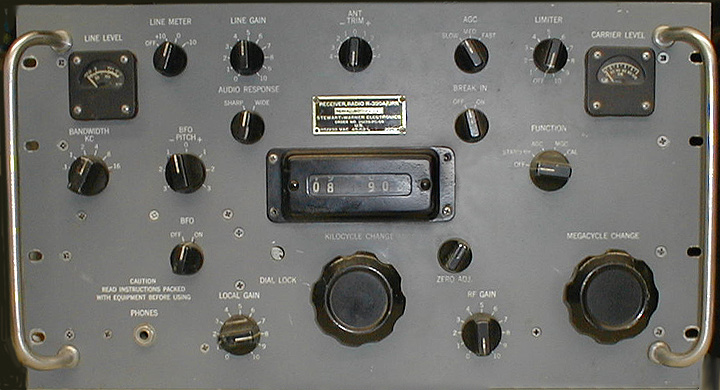
|
|
|
Stewart Warner Here is a link to that project (which is currently underway): Model 28 Teletype "Kit" Project |
|
|
|
|
|
|
|
|
National RAO-6
Some of the first radios into W.W.II were civilian radios converted for military use. The U.S. Navy needed a "super-snoop" radio - but one the enemy couldn't hear. All modern radios use a design that mixes the in-coming radio signal with a local signal. The Navy had long before discovered that the local oscillator in these radios could be detected at a fairly large distance - and had learned that they could find ships by listening for their receivers - radio silence indeed!... As a bonus - since the signal picked up was "tracking" the radio signal the enemy radio was listening to - the Navy could not only find the enemy - but usually figure out what he was listening to! The Navy reasoned that if they had figured this out - the enemy might stumble upon it as well... so they ordered a Radio designed to "hear" but not be "heard"! The National NC-120 - a civilian radio - was modified to become the RAO-6 -- or in Navy nomenclature - the CNA-46187-D. The CNA-46187-D is an eleven tube, table mounting, super-hetrodyne covering a continuous frequency range of for 540 to 30,000 kilocycles in five bands. The receiver is enclosed by a copper plated steel cabinet having a black wrinkle finish. The chassis and other steel parts are copper plated and given a gray enamel finish. With the addition of that second RF amp / isolation stage built in a "balcony" chassis bolted to the back of the main chassis, the radio radiates no more than 400picoWatts into the antenna circuit - and none detectable around the set itself. The RAO-6 can be powered by 110VAC ( 60 watts) or batteries (6V 3.5A & 180V 30ma.). |
|
| The "back porch" (left photo) bolted onto the back of the radio - contains another section of tuning capacitor, which tunes the antenna & grid of the RF amp stage. Under neath the chassis is another section of "sliding coil chest" That the band switch positions to connect the correct coil for the band in use. | The "balcony" is bolted onto the back wall of the main chassis, and contains the RF amp tube(6K7) and associated components. The Grid lead is shielded and passes into this space through a small hole, and even the grid cap connection to the 6K7 RF amp tube has a shield. The extension for the tuning capacitor in the "back porch" can be seen passing through the back wall. |
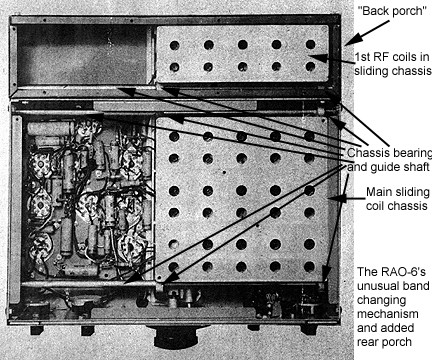 | |
|
Bottom view of an RAO-6 shows the bolted on back porch, and the sliding coil "catacombs" in both compartments. There are no components in the back porch save for the finger contacts to connect the coils as they slide above. However - the coil box in the main chassis covers roughly half of the components at all times -- fortunately - what "half" is covered ranges from all the way left to all the way right - so you can get to most of them without too much trouble. Makes for a very interesting to work on radio.
|
|
|
|
|
| Radio Set SCR-284-A
"A combined receiver and transmitter, for operation in a vehicle or on the ground." The above is the description from the technical manual TM11-275 - and is a most remarkable example of understatement. The history of the SCR-284A / BC-654 is long and proud. It's first offensive combat use was early in WWII . Aboard a landing vehicle in operation Torch November 8, 1942, the BC-654 was the first radio set to establish communications from the beach to the Fleet, and was used to coordinate Naval gunfire, and Beach Nets. The Radio Set last saw combat service during Korea; and was used extensively. |
|
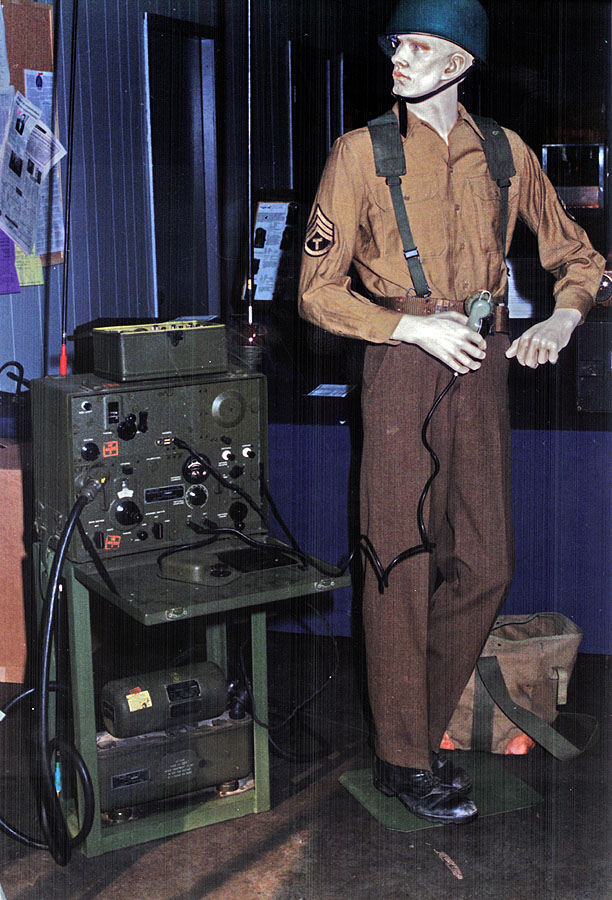 | 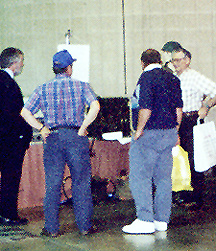 |
| The BC-654 Vehicular Version Fred and his radio - | Above Sammy and his radio draws a crowd at the 1995 HAM Fest in Birmingham, AL. You could watch people spot the radio set 50 - 100 feet away - and make a bee-line. Of course that 25+' of whip antenna did stick out/up a bit!!! |
|
| |
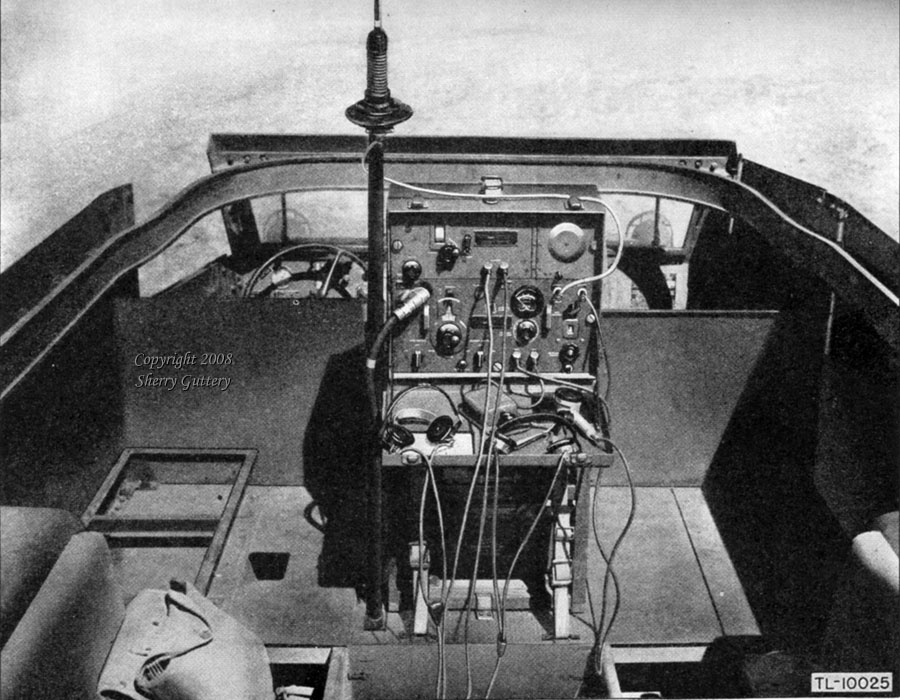 |
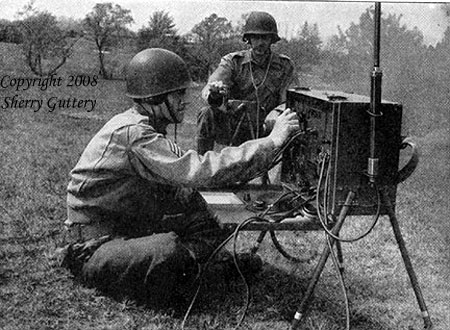 |
| Vehicular version - mounted in a duce and a half. | Field version. |
| The Signal Corps intention had been to replace the BC-654 with the BC-1306 in time for "Operation Overlord", but there were some snags in the production of the BC-1306, so starting with serial number 54,100 (and a date of around August 1943), some 50,000+ BC-654s were produced and delivered in support of the landings by the Allies at Normandy. There is a story that one of the first half-tracks to reach the beach was disabled so was used as a radio relay to the Fleet to coordinate the landing and Naval Gunfire - if this story could be verified, it may well be that the BC-654 was the first radio on the beach at Normandy as well - but things were such chaos that day, no one seems to know for sure -there certainly wasn't time to take inventory! By mid 1945 - the PE-162 gasoline powered generators built to power the BC-1306 had been modified by the addition of a connector that allowed the BC-654 to be powered by the PE-162 as well. This "versions" of the BC-654 became a Command Center radio - used in field headquarters throughout Europe and the Pacific - though the hand-cranked "Manpack" version remained dominate in the Pacific. The BC-654 receiver / transmitter covers 3800KC to 5800KC and is rated at 17 Watts CW, 5 Watts AM Phone - although 25W CW and 11W Phone are typical. As noted - the radio set comes in three basic configurations - Field Radio Set, Vehicular Radio Set (as displayed here) and Command Radio Set. In all configurations, the receiver / transmitter are identical - the differences come in how the unit is installed and powered. As a field radio, the unit sets on four legs, the receiver is powered by a battery (BA-43) and the transmitter by a hand-cranked generator. The set packed up into three 55 pound back-packs that the radioman and two assistants would carry. Once in operation, the radioman operated the set, while the two assistants took turns cranking the generator and standing guard. As a vehicular set the unit sits on a large stand which also holds a 6/12V dynamotor (PE-103) to power the transmitter -- the receiver uses a vibrator supply (PE-104). As a command set, the unit is usually set on a table, and powered by a two-cycle 3600RPM 1 horse gas generator. That brings us to this BC-654 - serial number 56089, manufactured in August, 1943. Whether it ever saw combat is doubtful - this unit looks as it did the day it was made. Complete with all spares and almost all of it's accessories, this radio is ready for service. The manual, TM 11-275 is dated 24 January, 1944. 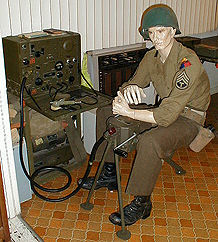 One or the other of the mannequins (Fred standing, Sammy seated) is currently displayed with the radio - and is in genuine field issue uniform with correct insignia... Fred stands while Sammy sits at the radio. We've been working on the display for a long time - and have taken it to several shows. One of the most memorable shows was the HAM Fest in Birmingham, May of 1996. It was fascinating watching from the mezzanine overlooking the crowded sales floor. You could watch people spot Fred from 50 - 100 feet away and make a bee-line towards him! (as most of you know who have stood next to him - he IS an imposing 6Ft+)! Several older gentlemen came up and looked the display over very carefully. Most would carefully just - touch - a part of the display as if paying some sort of respect to things longs forgotten. One or the other of the mannequins (Fred standing, Sammy seated) is currently displayed with the radio - and is in genuine field issue uniform with correct insignia... Fred stands while Sammy sits at the radio. We've been working on the display for a long time - and have taken it to several shows. One of the most memorable shows was the HAM Fest in Birmingham, May of 1996. It was fascinating watching from the mezzanine overlooking the crowded sales floor. You could watch people spot Fred from 50 - 100 feet away and make a bee-line towards him! (as most of you know who have stood next to him - he IS an imposing 6Ft+)! Several older gentlemen came up and looked the display over very carefully. Most would carefully just - touch - a part of the display as if paying some sort of respect to things longs forgotten.One gentleman studied over the display for a very long time. I approached him and started a conversation. He noted that we had "done real good..." "You must have someone in your club who used one of these during the war..." I told him no - that we had just done a lot of research on it--- "Why?" He said "I carried one into Germany in 1945 just like this. And this uniform - the stripes - insignias, is just like mine." He did note that we were missing Fred's knife - often used to make stakes and trim branches to hang antennas - and he also noted the Korea vintage boots - "just a bit different than what we had in the big war... (We usually have a "fake" .45 auto in the holster on display - we do however have a real 1911 in the holster when it's appropriate and well guarded). He paused a while, turned some of the controls on the transmitter - patted the radio's top - and turned towards me once again. He had tears in his eyes. He paused a moment more over the radio - turned back and said - "We were about 15 miles inside Germany - we set up to sight artillery. We had just started tuning up when Nick was hit. He was cranking the generator when he caught a sniper's bullet. Several of our boys opened up and got the sniper - but Nick didn't make it." He smiled and moved on to look at the other radios in the display. Several hundred people visited Fred and his radio that Saturday. Many shared what they knew about the BC-654 - some older HAMs are familiar with it as it was a very popular surplus set on 80 Meters in the 50's and 60's. Some youngsters got a look at history - Some oldsters got a trip down memory lane - Some of us got more than we bargained for. Speaking of Fred - Fred is a standing manikin - which makes it harder to display with the radio. As noted - we have recently acquired a seated manikin - Sammy. We have a problem though - Sammy is BIGGER than Fred (can you believe that?!). The shirt sleeves fall three inches short - which looks a little funky. We're trying to locate a genuine shirt of the appropriate size (the pants are tight - but are usable). With both Sammy & Fred - the display is VERY impressive (Sammy seated on the GN-45 Generator - & Fred "talking" on the radio...). If you hear of any source for an appropriate size shirt - (LARGE!) let us know! That will allow us to display the "field pack" version... Sammy seated on / cranking the GN-45 and Fred "talking" on the 654. We also recently obtained (finally) a PE-162. It is complete with spares, etc. - and will be able to run the radio just as "back then". That leaves only a few things missing - we still need four legs for the radio in "field" dress; a "proper" FM-41-A frame (our is a reproduction); and the man-pack bag for the radio (we have the correct ones for the GN-45, antenna kits, and the accessory bag. Gaining those- we'll be able to display (and operate) the unit in any of it's three configurations. |
|
|
|
|
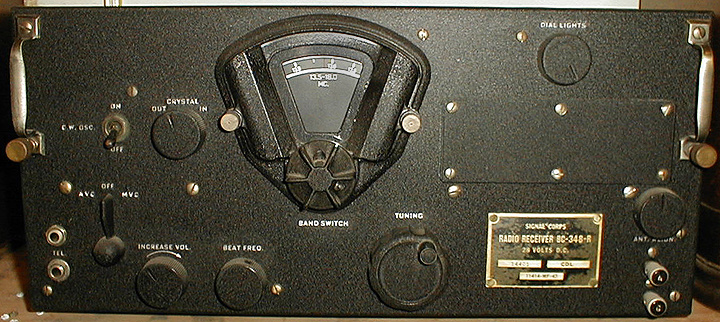
|
|
|
Belmont Radio BC-348R
Another radio with a long and proud history is the BC-348 (and it's 14Volt cousin the BC-224). Manufactured over a period of 20 years (mid 1930's -1957) the BC-348 enjoys one of the longest service records of any WWII design gear. Designed primarily for aircraft service - the BC-348 has many very attractive attributes: Extremely stable; very selective yet easy to tune (200:1 tuning ratio); very sensitive (S=S+N/N > 10db = 5uv). Used in the late years of WWII in virtually all heavy bombers (including the Enola Gay) the BC-348 served through Korea as well. |
|
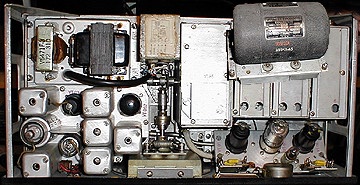 | 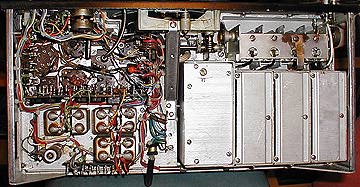 |
| Topside. Here the dynamotor has been replaced by a 110VAC supply. However the dynamotor can be installed very quickly - to return the radio to "stock" condition. | Bottom of chassis. |
| When this radio was found - most all of the wiring had been damaged by a mouse - virtually all wires over an inch had most of thier insulation stripped along the length somewhere. Every damaged wire (and sleeving) was replaced. Since the radio had to be taken down to almost a bare chassis - it was decided to go ahead and refinish the front panet - as well as te cabinet. The problem with paint the front panel in these sets - is that the lettering labeling the various controls, etc. is "reverse" punched - in other words it sticks out - through the paint. So to refinish the panel, every location of lettering had to be precisely noted, the panel sprayed with wrinkle finish, allowed to dry and cure - then carefully - using 400 grit wet or dry - sanding ever so carefully through the paint to once again expose the letters - without damaging the surrounding paint - that very rough wrinkle finish. The picture on the left in the upper side of the chassis - the few original wires we could salvage were usually to the grid connections of the tubes. The AC convereted power supply is installed (since we use this radio a lot) - but the 28VDC dynamotor can be put back in to quickly return the radio to original configuration. | |
|
|
|
Randy's remains(ok leftovers) --- radio maked (not for sale) are really not for sale. | |
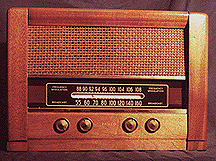 |
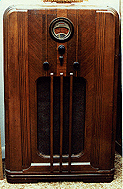 |
| Philco 49-909 | Philco 37-640 Console |
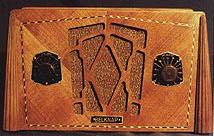 |
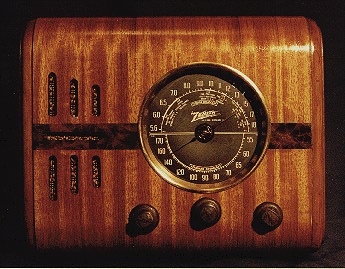 |
| Belknap | Zenith 5F233 |
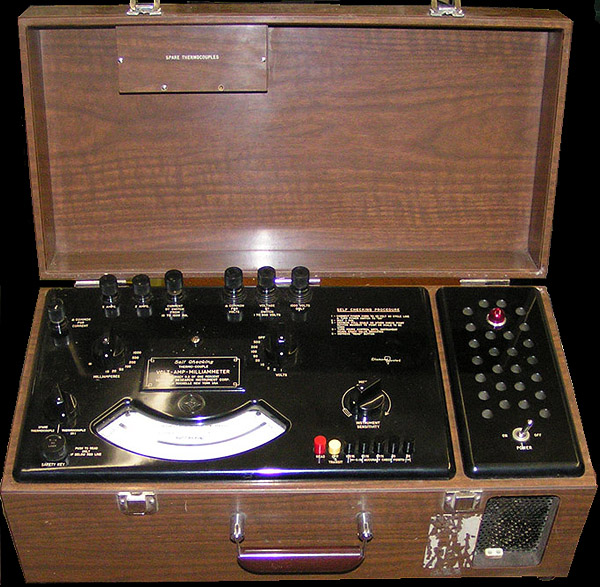 |
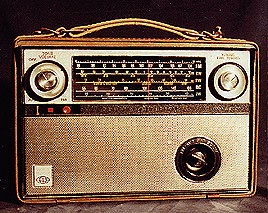 |
| Test Equipment is a whole 'nother collection... small - but growing. Click Here for more... | GE P-990 |
|
|
|
|
|
|
| Go to the "Links Page": Links Page |
|
|
|
|
| © 2008 & 2012 Sherry Guttery. | |